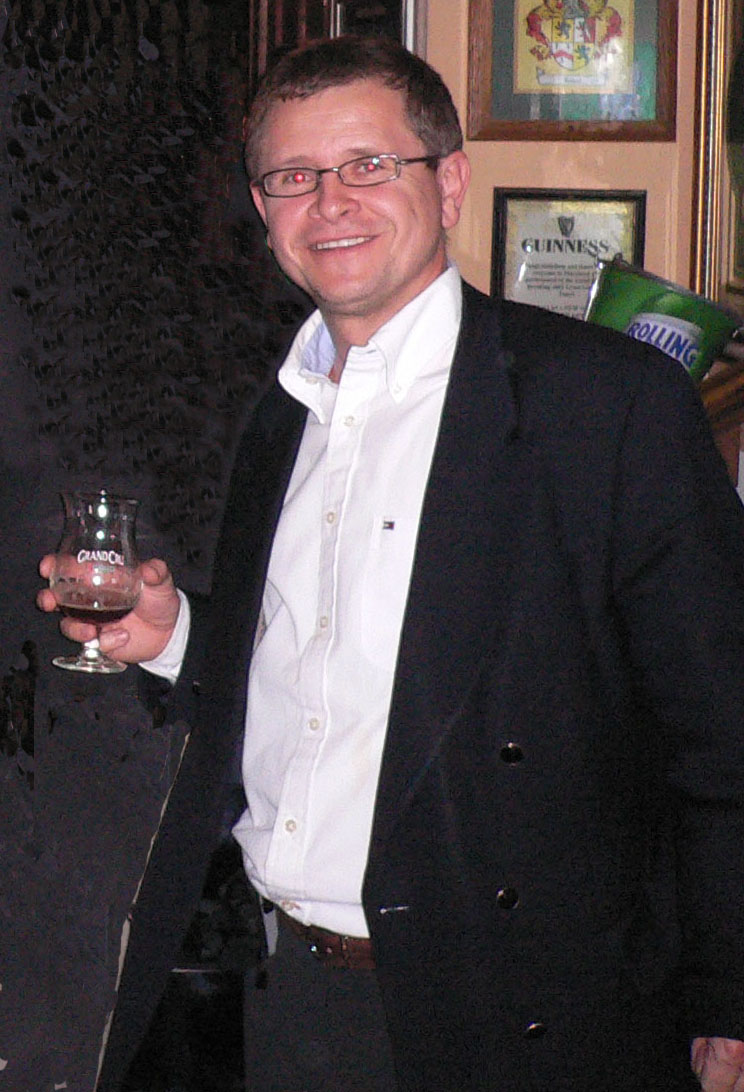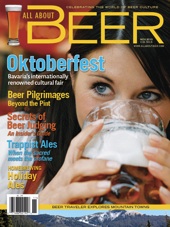How did you get started in brewing?
I entered the brewery in ’82 as the purchaser. In ’93 the position of technical production director became free. From being the purchaser, I knew the raw materials very well. Also, we had lived for twelve years in the brewery—so when there were problems in the brewery, they called me.

Literally in the brewery?
Yes, yes. Above the entry, above the offices, there is an apartment. Our two children were born at the brewery, so that was a very nice life.
And your background?
I had a great background about beer brewing, certainly what happens in our brewery, Rodenbach, but not enough background for the whole beer story. So, for one year I studied brewing technology. In ’96, Prof. Delvaux [Center for Malting and Brewing Studies, Catholic University of Leuven] became the advisor in our brewery and realized very important things to optimize production and control quality.
Rodenbach’s beers are so unusual. What are the particular challenges in brewing them?
First of all, you have to know the spirit about our type of brewing. It’s a late Middle Ages conservation method.
In the Middle Ages, brewers didn’t use hops; they only used herb mixtures named gruit. The brewers had to buy gruit—it earned taxes for the counts of Flanders—and it was costly. They didn’t know hops very well in our area, and they only thing they had to make beer was stone, metal and wood. The maturation occurred in wood: they couldn’t clean it, and the beer was bad in one or two weeks, infected by acetic acid and lactic acid. The beer must be consumed very fresh.
In England, in the neighborhood of London, there was a method that part of the beer stayed longer in wood vats, so that you have complete acidification.
[Here is the basic concept.] You start with water at pH 7. When you make a brew, after filtration you have 5.6-5.8 pH. Then you cook the brew and you have between 5.1 and 5.4. Then you add yeast—it was always mixed yeast culture—and after fermentation you have pH between 4 and 4.2.
You have to know that 3.5 is a very important pH in beer production, because under 3.5 the beer is less vulnerable to bacterial infection and has a longer shelf life.
They take a part of the beer and let it mature in wooden vats; the pH goes down to 3.1 or 3.2. That is the case in our great wooden vats. Then you blend some of it—a quarter, fifty percent, thirty-three percent—with younger beer and you bring the pH down in the neighborhood of 3.5. That is the method of conservation.
The longer you let the beer mature in the vats, the more acetyl acetate you have. In our vats we have acetic acid at the top of the vats, because there’s a little bit of air space. After one year of maturation, acetic acid becomes ethyl acetate, which is the green apple taste you have in Grand Cru.
When the air space is too great, then you have too much acetic acid, and the beer is too strong. When there is too little, then maybe the beer is not strong enough. So therefore, after two years, we have to blend several vats together to have a good blend of mature beer.
The second thing that is very important is the ratio of surface to volume. We have vats of 180 hectoliters, and 350 and 650. The beer of the 650-hectoliter vats is completely different from that of the 180-hectoliter vats. We say the 180 hectoliter vats give you the best beer.
With the 650-hectoliter vats, the beer must stay much longer, and you have more lactic acid. Lactic acid gives you ethyl lactate; acetic acid gives you ethyl acetate.
You can’t smell ethyl lactate, you can only taste it; but ethyl acetate you can smell it because it is very volatile.
These are very old methods, but now we can explain the biochemistry. Long ago, you could find this type of product in the neighborhood of London, the method used for porters. That was entire butt. {At first}, it was blended in the pub; then after that the brewery blended it because they weren’t so honest in the pub.
Porter comes from Latin portare: it means you can drink, the beer is drinkable. Potable.











